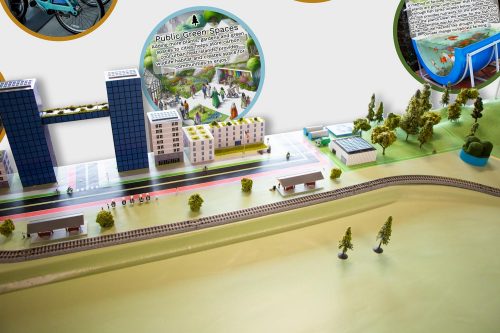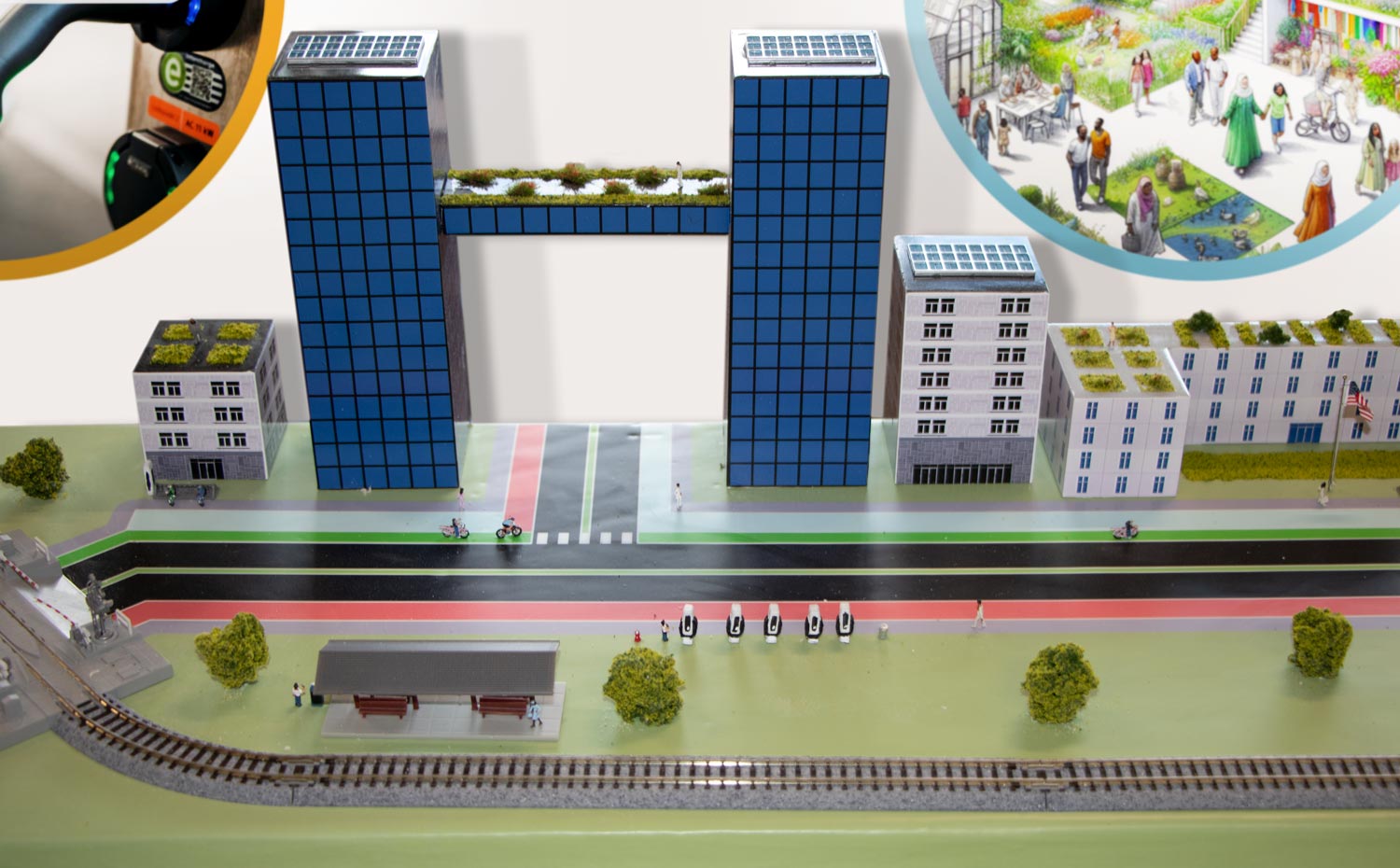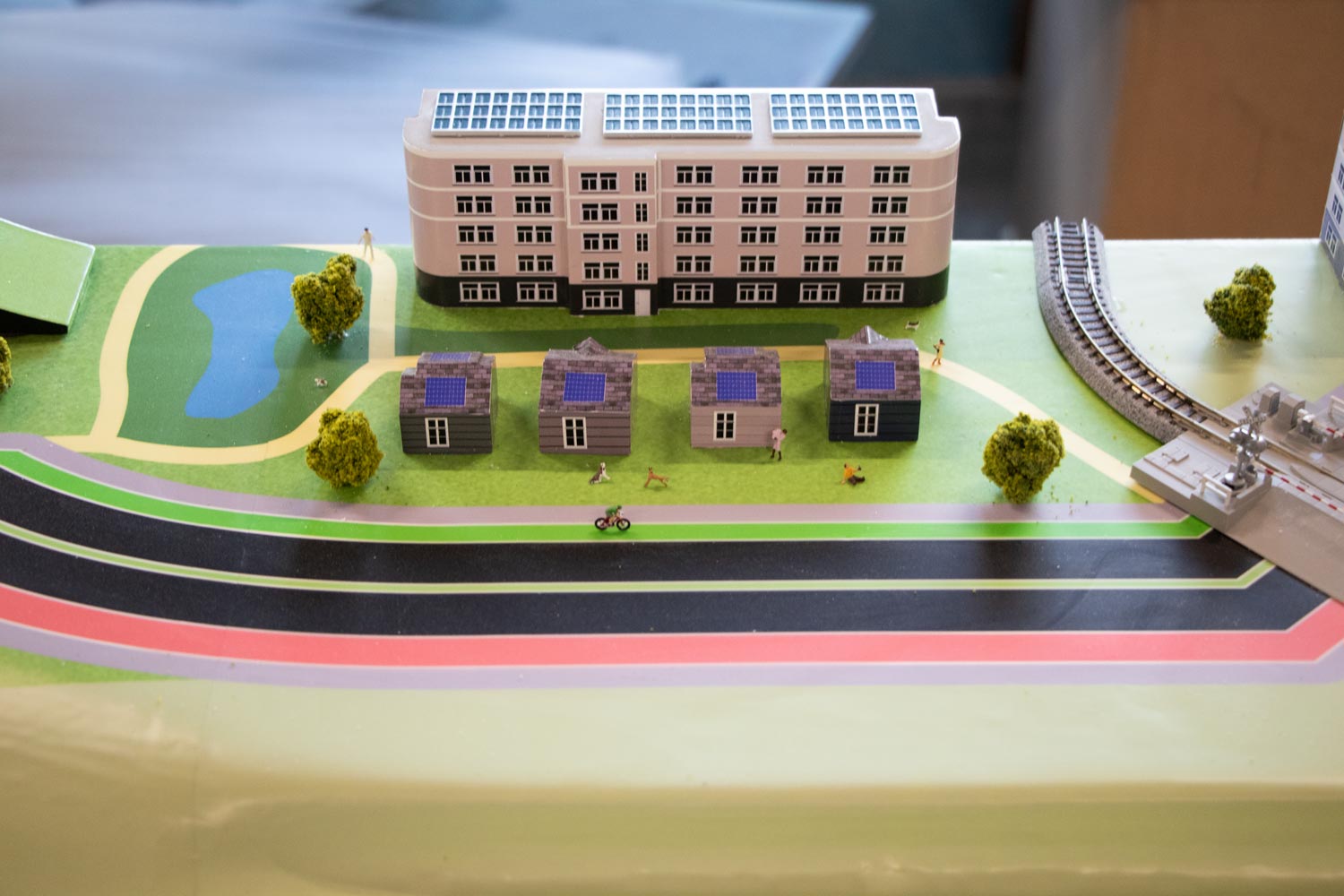NatureBridge Architectural Display
NatureBridge Architectural Display
We Build Custom Giant 3D Architectural Display
Did you know we make
custom
3D Architectural Displays?

Crafting the NatureBridge Architectural Display: A Fusion of Art, Education, and Environmental Awareness
In the heart of the Marin Headlands, amidst the breathtaking beauty of the Golden Gate National Recreation Area, lies a unique campus dedicated to outdoor and environmental education—NatureBridge. For decades, NatureBridge has welcomed students, teachers, and outdoor enthusiasts from across the country to participate in immersive educational programming that teaches them to connect with and protect the natural world. But recently, this educational experience took a bold step forward with the introduction of a permanent architectural display in the Climate Solutions Lab on their Golden Gate campus—a project that merges creativity, learning, and environmental stewardship.
The NatureBridge architectural display isn’t just another exhibit; it’s an interactive, instructive diorama designed to engage students in hands-on learning about climate change and sustainability. As an outdoor and environmental education non-profit organization, NatureBridge sought to create a dynamic and engaging space where students could learn about the carbon cycle, explore various climate solutions, and actively participate in building their own ideas for combating climate change. This display brings the concepts taught by NatureBridge to life in a tangible way, providing students with a platform to think critically, collaborate, and create.
In this blog, we’ll take you through the process of designing and building this educational diorama, exploring the art, architecture, and thoughtfulness that went into crafting a display that’s both beautiful and impactful. We’ll also dive into the creation of custom metal letters for the display—an element that adds sophistication and durability to the overall design.

Designing for Education: Turning Concepts into Interactive Learning
When NatureBridge first approached us to design the architectural display for their Climate Solutions Lab, the goal was clear: to create an engaging, interactive, and permanent installation that would support their environmental education programming. The diorama needed to go beyond static panels of information and allow students to physically engage with the exhibit by building their own climate solutions and placing them within the model.
The exhibit had to meet multiple objectives: it needed to educate students about complex environmental issues such as the carbon cycle, offer examples of climate solutions, and provide a space for students to carry out hands-on activities. On top of that, it needed to be designed with durability in mind, as it would be housed in a busy lab space where hundreds of students cycle through year-round.
We began by brainstorming ways to make this educational experience immersive and engaging. The idea was to create an architectural display that functioned as a visual and tactile representation of climate challenges and solutions. At its core, the diorama would depict elements of the natural environment, such as forests, oceans, and cities, with space for students to add their climate solutions during an activity called “Build a Climate Solution.”
For the vertical panels, we envisioned vibrant illustrations and clear, concise text that would explain various elements of the carbon cycle and showcase real-world climate solutions. The challenge was to distill complex scientific concepts into digestible pieces of information that could resonate with students of varying ages and backgrounds. To do this, we worked closely with NatureBridge educators and climate science experts to ensure that the content was accurate, impactful, and easy to understand.
The Diorama: Bringing the Climate Solutions Lab to Life
The centerpiece of the exhibit is the diorama—a physical, three-dimensional model where students can place the climate solutions they build during their time in the Climate Solutions Lab. This interactive element was designed to give students a sense of ownership over the solutions they create and emphasize the idea that they, too, can contribute to addressing climate change.
The diorama itself is a landscape made of eco-friendly materials, depicting a miniature world where various climate challenges play out. The base of the model features terrain elements such as mountains, forests, and waterways, representing the different ecosystems that are affected by climate change. Urban areas, represented by small buildings and roads, serve as a reminder of human impact on the environment.
One of the key design challenges was ensuring that the diorama was sturdy enough to withstand the constant interaction of students placing and removing their climate solutions. To solve this, we used a combination of sustainable, durable materials that could hold up over time without losing their aesthetic appeal. Recycled wood and environmentally-friendly polymers formed the foundation of the model, while the terrain and landscape features were carefully crafted with a combination of hand-sculpting and precision cutting.
The interactive element of the diorama extends beyond its visual appeal. Students are encouraged to use a variety of art and building materials to create their climate solutions—everything from tiny wind turbines to solar panels, to innovative ideas like reforestation or waste reduction initiatives. Once built, these pieces are placed on the diorama, symbolizing how each solution fits into the broader context of addressing climate change.
This hands-on activity fosters teamwork and problem-solving, encouraging students to think creatively about real-world environmental challenges and inspiring them to take action. By placing their solutions on the diorama, they can see firsthand how individual efforts can collectively contribute to a healthier planet.

Vertical Panels: Engaging with Climate Science
While the diorama serves as the interactive heart of the exhibit, the vertical panels surrounding it play a crucial role in providing context and instruction. These panels are packed with information on climate change, the carbon cycle, and various examples of climate solutions that are being implemented around the world.
Designing the vertical panels was an exercise in balance. On one hand, the content needed to be scientifically accurate and educational, but on the other hand, it needed to be visually engaging and accessible to students. We opted for a mix of illustrated diagrams, photographs, and infographics to convey information in a way that was visually stimulating but not overwhelming.
The panels walk students through different aspects of the carbon cycle, illustrating how carbon moves through the atmosphere, oceans, and living organisms. From there, they explore the human impact on this cycle, particularly how fossil fuel consumption and deforestation have led to an increase in atmospheric carbon dioxide levels.
The panels also offer a hopeful perspective, highlighting innovative climate solutions such as renewable energy, carbon capture technology, and ecosystem restoration projects. Each solution is presented in a way that is easy to understand, with clear visuals that help students see how these technologies and initiatives are making a difference.
For many students, this may be their first time learning about climate science in such depth, so it was important to ensure that the tone of the panels was both informative and empowering. The aim was to leave students with a sense of agency—that they have a role to play in combating climate change and that solutions are within reach.
Metal Letters: The Finishing Touch for a Sophisticated Exhibit
One of the defining features of the NatureBridge architectural display is the inclusion of custom metal letters, which serve as both functional labels and aesthetic elements. The metal letters were carefully crafted to label different sections of the exhibit, giving it a polished, modern look that stands out in the lab space.
The process of creating these metal letters began with CNC (Computer Numerical Control) machining, a technique that allows for precise cutting and shaping of metal materials. Stainless steel was chosen for its durability, resistance to corrosion, and sleek appearance, making it the perfect material for an exhibit that needed to endure frequent use while maintaining its visual appeal.
Once the letters were cut, they underwent a series of finishing processes, including sanding and polishing, to give them a smooth, reflective surface. For certain letters, we applied a brushed finish to create a subtle contrast between shiny and matte surfaces, adding a layer of sophistication to the overall design.
Each metal letter was carefully mounted on the display using hidden fasteners, ensuring that they were securely attached while maintaining the clean, seamless look we wanted to achieve. The letters serve as labels for different sections of the exhibit, such as “Carbon Cycle,” “Climate Solutions,” and “Build a Climate Solution Activity.” Their polished surface catches the light and adds a touch of elegance to the exhibit, elevating the overall experience for visitors.
The addition of metal letters also helped to create a sense of permanence, emphasizing that this exhibit is a long-term fixture in NatureBridge’s Climate Solutions Lab. By using high-quality materials and a timeless design, we ensured that the display would remain a valuable educational resource for years to come.

Inspiring the Next Generation of Environmental Stewards
The NatureBridge architectural display is more than just an educational tool—it’s an invitation for students to engage with one of the most pressing issues of our time. By combining interactive elements with visually engaging content, the exhibit helps students connect the dots between climate science and real-world solutions, encouraging them to think critically about their role in addressing climate change.
For the students who visit the Climate Solutions Lab, this exhibit is a chance to move beyond abstract concepts and take part in hands-on learning. By building their own climate solutions and seeing them placed on the diorama, they gain a deeper understanding of how their actions can make a difference. The experience fosters a sense of responsibility and empowerment, equipping students with the knowledge and skills to become environmental stewards in their own communities.
For NatureBridge, this exhibit represents the culmination of years of work in environmental education. It provides a dedicated space for deeper exploration of climate issues, offering students a richer, more immersive learning experience than ever before. The Climate Solutions Lab, with its architectural display at the center, is now a hub for innovative programming that encourages students to take action on climate change.
Conclusion: Crafting a Display with Purpose and Impact
The NatureBridge architectural display is a confirmation to the power of design, education, and collaboration. By combining art, architecture, and environmental science, we were able to create an exhibit that not only informs but inspires. From the interactive diorama to the beautifully crafted metal letters, every element of the display was designed with purpose—to engage students, spark creativity, and foster a deeper understanding of climate change.
As we look to the future, this exhibit will continue to serve as a valuable resource for NatureBridge and the students who come through their doors. It stands as a reminder that education is not just about absorbing information—it’s about taking action, thinking critically, and working together to solve the challenges we face. And in the case of the NatureBridge architectural display, it’s about creating a space where students can learn, engage, and envision a better future for our planet.